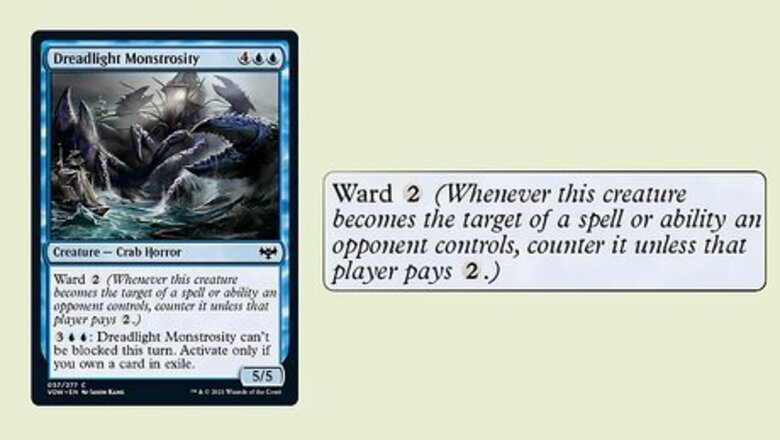
views
- Ward increases the cost to target a creature by requiring the opponent to pay more mana or perform some other action.
- If an opponent doesn’t pay for ward, the card targeting the ward creature is automatically countered.
- Ward is a triggered ability, which means it uses the stack and can be responded to by opponents.
What is ward?

Ward is an ability that provides an extra layer of protection. Ward states, “Whenever this creature becomes the target of a spell or ability an opponent controls, counter it unless that player pays X,” where X is an additional cost of some kind. Basically, ward makes creatures harder for opponents to deal with. Ward is powerful for two reasons. For one, it makes removing your creature much more expensive than it otherwise would be. On top of that, it puts pressure on your opponent’s decision-making, since ward takes up resources that could otherwise be used to cast spells. Ward is an evergreen ability, meaning that it can appear in any set. Ward is also a triggered ability, meaning that it uses the stack to resolve.
How does ward work?
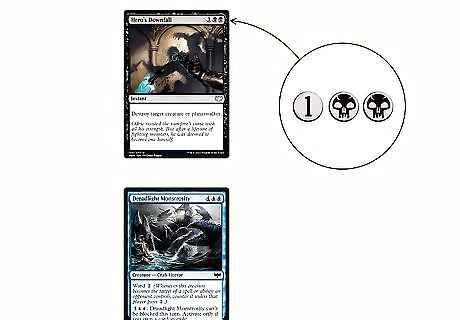
An opponent targets a creature with ward. Let’s say you’ve got a Dreadlight Monstrosity on the board and your opponent wants to get rid of it. They pay two black mana and one colorless mana to cast Hero’s Downfall. The opponent must announce what they’re targeting when they cast Hero’s Downfall.

The ward trigger goes on the stack. As soon as the opponent’s Hero’s Downfall goes on the stack, the ward trigger goes on the stack, on top of the Hero’s Downfall. Remember, the stack is “first in, last out” so the ward trigger must resolve first.

The opponent can pay the ward cost to make the spell go through. If the opponent wants their Hero’s Downfall to resolve, they must pay the ward cost. What that cost is differs from card to card. Dreadlight Monstrosity has ward 2, so the opponent must pay two additional colorless mana. If they do, the ward trigger is resolved and the Hero’s Downfall resolves. If you did happen to have a card like Negate in hand, you could counter the Hero’s Downfall after they pay the mana to really get them! If you just see colorless mana next to the word “ward” on a card, it means that’s the amount of mana the opponent must pay. Some cards have more specific ward requirements. For example, Dwarven Forge-Chanter has “ward—pay 2 life.” To target Forge, Neverwinter Charlatan, you must sacrifice a creature.
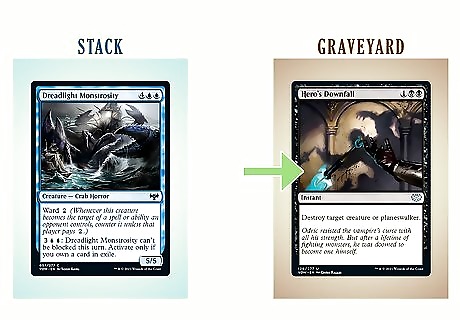
If the ward cost isn’t paid, the spell is countered and nothing happens. If your opponent can’t pay the 2 mana required to fulfill the ward cost, the Hero’s Downfall is automatically countered and it goes to the graveyard. This wouldn’t normally happen unless your opponent totally forgot about the ward ability, or miscounted their lands. That doesn’t mean the ward ability didn’t accomplish a ton, though. Your opponent basically had to pay two extra mana for their removal spell.
Nuances & Unique Interactions
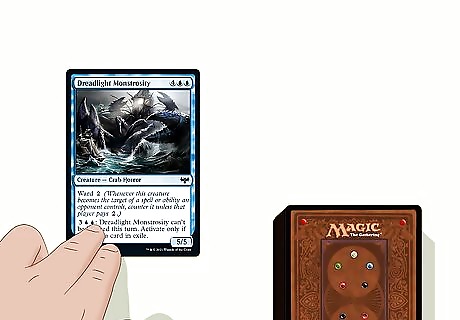
Ward only matters once the creature is on the board. When you cast a creature, that spell goes on the stack the same way any other spell would. When it is on the stack, ward is irrelevant. You can counter and interact with the card the same way you’d counter or interact with anything else. The ward ability only matters once the creature spell has resolved and it’s on the board.

If a card targets multiple ward creatures, all triggers occur. Let’s say a player casts Silence the Believers targeting three cards with ward—ward 2, ward 2, and ward sacrifice a creature, respectively. All three of those ward triggers go on the stack, and the player targeting the creatures must pay each ward cost separately. In other words, it’s not an “all or nothing” situation where the player casting Silence the Believers must pay 4 mana and sacrifice a creature.

Use sacrifice effects and boardwipes get around ward. Ward specifically uses the language, “whenever this creature becomes the target of a spell or ability…” That word “target” is really important in MTG. Any card that doesn’t target the ward creature gets around the ward. This includes cards that say “target player sacrifices a creature” and cards that say “destroy all creatures.” Popular sacrifice effects include Liliana of the Veil and Chainer’s Edict. Popular boardwipes include Wrath of God, Damnation, and Supreme Verdict.
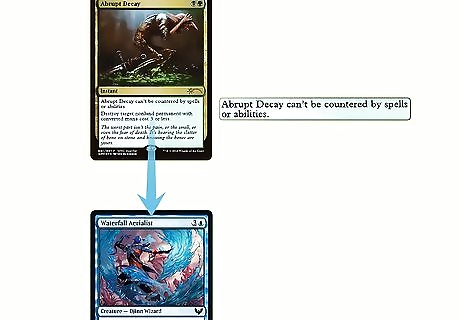
Uncounterable spells can ignore ward entirely. If a card says, “This spell can’t be countered” it trumps the ward ability. For example, if you use Abrupt Decay to target Aboleth Spawn, which has ward 2, the ward trigger doesn’t do anything. It still goes on the stack like normal, but the Abrupt Decay will resolve whether or not the 2 mana is paid.
Why Ward Is Becoming More Common
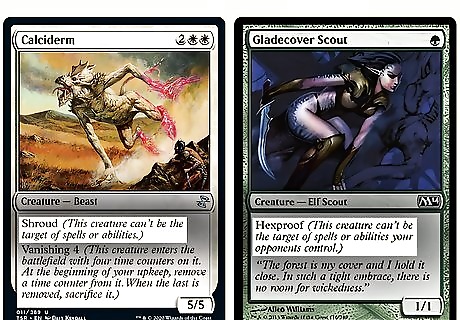
Ward is a natural evolution of shroud and hexproof. Shroud is the oldest iteration of this ability. Creatures with shroud can’t be targeted by anything from either player. Hexproof makes it impossible for opponents to target the card. Both of these abilities are kind of naturally unfun, since being unable to interact with a card feels bad. Ward is the modern iteration of this effect, and it’s what MTG will use going forward as a replacement for hexproof and shroud. Ward isn’t nearly as punishing as hexproof or shroud, but it still offers some evasion. That makes it fun for the player with the ward creature, and rewarding for the other player to get rid of it. Wizard of the Coast, the company responsible for designing and printing MTG, have been experimenting with more complex ward costs (like Saruman of Many Colors), so it’s likely they’ll keep exploring this mechanic further in future sets.
The Best Cards with Ward
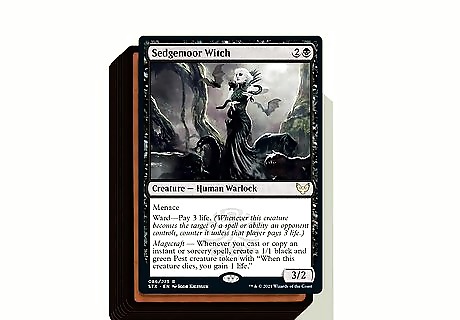
Sedgemoor Witch Sedgemoor Witch is one of the only ward creatures that sees play in almost every eternal format. Legacy Reanimator, Modern Swarm, and black Affinity decks all like the witch. She does two things black decks really want to do—she makes creatures you can sacrifice and rewards you for casting non-creature spells. These days, Sedgemoor Witch mainly sees play in EDH, but she’s still a popular build-around card for brewers and deckbuilders.

Miirym, Sentinel Wyrm Miirym, Sentinel Wyrm is the perfect commander for EDH dragon decks. It’s in Temur colors (green, blue, red), which opens the deck up to a ton of fun cards, and it gives massive value. Any time a dragon enters the battlefield, you get a second copy as a token!

Sauron, the Dark Lord Sauron, the Dark Lord has one of the most difficult ward abilities to deal with—players have to sacrifice a legendary artifact or legendary creature to even target it. This is making him a huge EDH card—both as a commander and regular 1-of. It even churns out an orc army, which helps you overwhelm your opponent quickly. Sauron, the Dark Lord is seeing a little bit of play in Legacy Reanimator shells, but it’s not popular elsewhere when it comes to eternal formats.
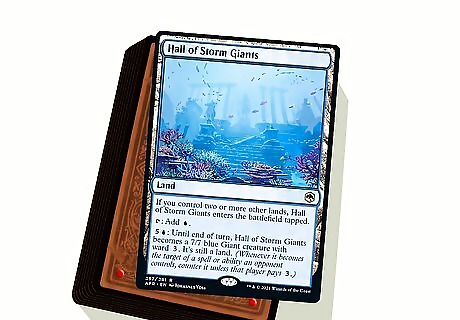
Hall of Storm Giants Hall of Storm Giants is arguably the best manland in the game. It has basically replaced any copy of Celestial Colonnade, Creeping Tar-Pit, and Lumbering Falls in Modern, Legacy, and Pioneer. In other words, it is now the premier manland. By the point in the game where blue decks are able to activate a manland, they’d much rather have a beefy creature with ward than a smaller creature with flying, unblockable, or hexproof.












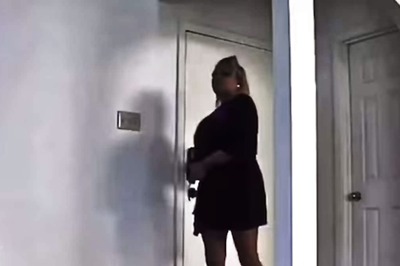






Comments
0 comment